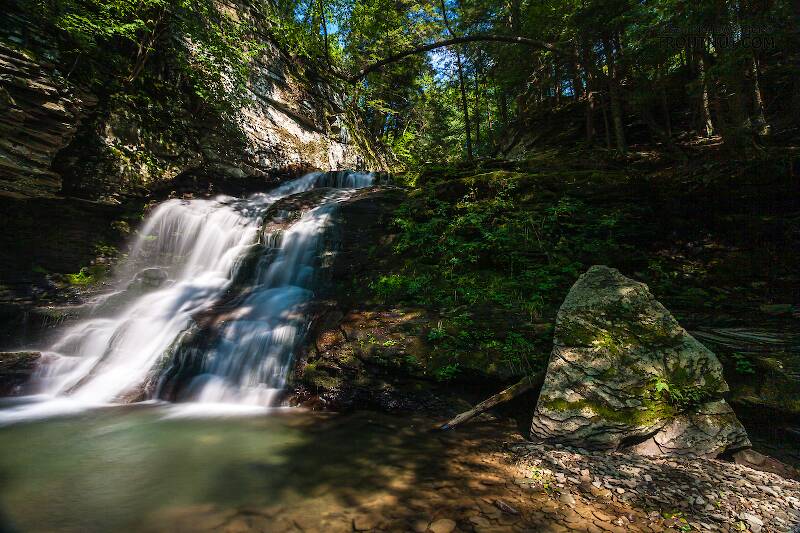
Salmonflies
Pteronarcys californica
The giant Salmonflies of the Western mountains are legendary for their proclivity to elicit consistent dry-fly action and ferocious strikes.

Mayfly Species Ameletus lineatus (Brown Duns)
Where & when
This is the only species of Ameletus ever known to cause fishable hatches in the Midwest, but it is by no means common.In 13 records from GBIF, adults of this species have been collected during May (38%), April (31%), June (23%), and July (8%).
In 19 records from GBIF, this species has been collected at elevations ranging from 20 to 2579 ft, with an average (median) of 741 ft.
Species Range
Physical description
Most physical descriptions on Troutnut are direct or slightly edited quotes from the original scientific sources describing or updating the species, although there may be errors in copying them to this website. Such descriptions aren't always definitive, because species often turn out to be more variable than the original describers observed. In some cases, only a single specimen was described! However, they are useful starting points.
Female Spinner
Wing length: 11-12 mm
A large pale species, clear-winged, and without ganglionic markings on the venter of the abdomen. Known only from females and nymphs.
Head yellowish brown. Prothorax dark yellowish brown, narrowly purplish on the posterior margin. Mesonotum clear greenish yellow, scutellum with blackish lateral margins. Pleura and sternum brown, the sternum dark brown on the posterior portions of the prothorax and mesothorax. Legs brown. Wing with no clouds along the cross veins.
Abdominal tergites flesh-colored, margined laterally and posteriorly with orange-brown. Margin of pleural fold pale. Indistinct dark submedian streaks present. Sternites 1-6, and anterior half of sternite 7, flesh-colored; sternites 8-10, and the posterior half of 7, light olive brown. A purplish median mark on sternite 6, but no definite ganglionic marks on the other sternites. Submedian oval depressions present. Antero-lateral angles of sternite 8 whitish. Tails purplish brown, joinings darker.
Nymph
The nymph has a cream-yellow thorax and abdomen, mottled and marked with dark brown. Legs banded. Tergites 6 and 7 largely cream colored; tergites 8-10 largely dark brown. Ventrally, three continuous dark brown stripes extend the length of the abdomen; one is median, the others lateral in position. Each dark lateral streak is separated from the lateral margin by a pale line. Lateral margins of segments 6-9 are narrowly flattened and thin; postero-lateral spines present on segments 2-9, well developed on 5-9. Tails whitish, with the two usual dark bands.
The larger size and the apparent lack of dark ganglionic markings seem to distinguish this from the other two eastern species, A. ludens and A. browns.
Start a Discussion of Ameletus lineatus
References
- Caucci, Al and Nastasi, Bob. 2004. Hatches II. The Lyons Press.
- Knopp, Malcolm and Robert Cormier. 1997. Mayflies: An Angler's Study of Trout Water Ephemeroptera . The Lyons Press.
- Needham, James G., Jay R. Traver, and Yin-Chi Hsu. 1935. The Biology of Mayflies. Comstock Publishing Company, Inc.
Mayfly Species Ameletus lineatus (Brown Duns)
Species Range
Common Name
Resources
- NatureServe
- Integrated Taxonomic Information System
- Global Biodiversity Information Facility
- Described by Traver (1932)


